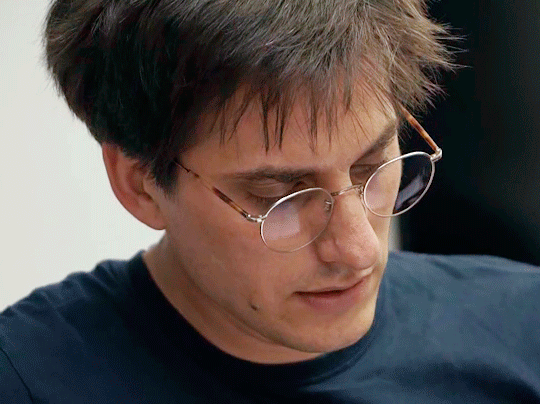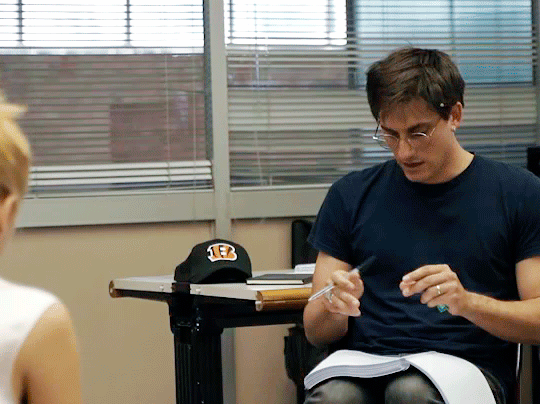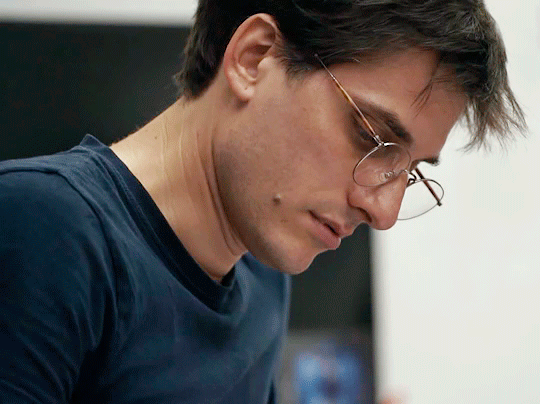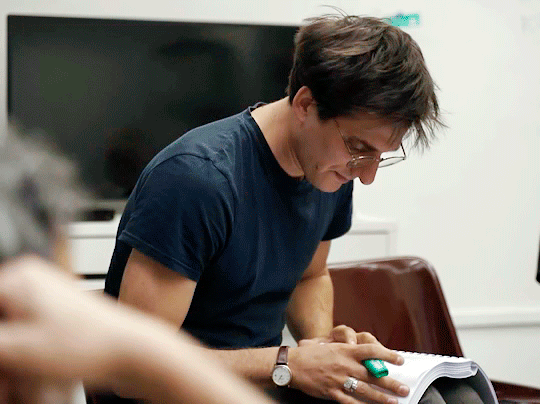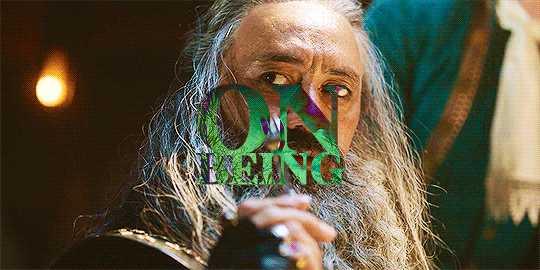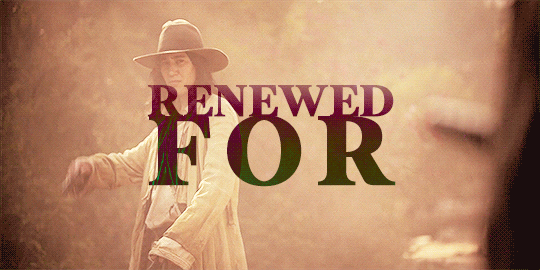Text
Hydrophobic Water Maze: a superhydrophobic coating allows this dynamic puzzle to use a drop of water as the “pinball”, which can split into multiple smaller drops and recombine along the way. The wood surface is treated with silica nano-coating that makes water roll off
3K notes
·
View notes
Photo

Queens of Infamy: Isabella of France
From the notorious to the half-forgotten, Queens of Infamy, a Longreads series by Anne Thériault, focuses on world-historical women of centuries past.
Happy solstice, everyone! Allow us to introduce you to Isabella of France: Married off at age 12, Isabella put up with her husband’s shenanigans over decades. Eventually, the She-Wolf of France had had enough.
In the late summer of 1326, a small mercenary army gathered in Dordrecht, Holland, preparing to cross the North Sea and invade England. This in and of itself wasn��t all that unusual — from the Romans to the Vikings to the Normans, it seems like all of the European historical heavyweights wanted a piece of that green and pleasant land. I mean, I get it! It’s a classic case of those itchy Julius Caesar fingers: A man sees an island, and he wants to take it. What set this case apart was that the person leading the army wasn’t a king or a prince or a red-headed upstart duke, but a woman who was already the queen of England — had been queen, in fact, for nearly two decades. And the king she wanted to depose wasn’t some usurper who had unjustly taken the throne, but rather Edward II, her husband and the father of her four children. As she stepped onto that boat, the 31-year-old queen would set into motion a sequence of events that would leave her forever remembered as Isabella the She-Wolf of France.
* * *
The French social scene of 1308 began with two glittering back-to-back events: the wedding of the future Charles IV of France to Blanche of Burgundy and, a week later, the wedding of his sister Isabella to Edward II of England. With Charles clocking in at 13 years old, and Isabella having just celebrated her 12th birthday, it was a double tween wedding extravaganza! Charles’ new wife, a veritable spinster at the ripe old age of 11, was young but at least age-appropriate. Edward, meanwhile, was nearly twice his child bride’s age — he would turn 24 three months later. Still, it wasn’t exactly an inauspicious start. By all accounts the union of the king and future queen of England was a sumptuous affair, attended by no fewer than eight European monarchs, as well as assorted princes, princesses, and other nobles. For Isabella, who was brightly turned out in robes of blue, gold, scarlet, and yellow and a crown dripping with precious stones, this was the moment she’d been preparing for since she was 4 years old.
673 notes
·
View notes
Photo
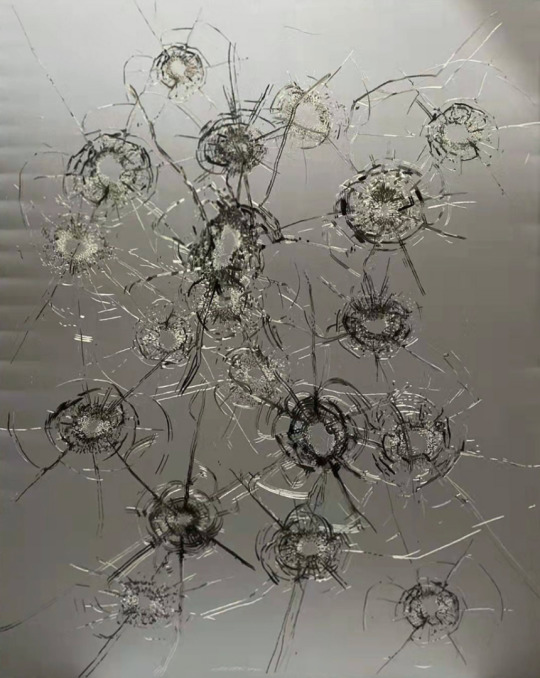
Zhao Zhao (Chinese, b. 1982)
Constellations, 2021-2022
Embroidery on silk
46K notes
·
View notes
Text
The actor who plays Jim just posted this, oh my god
11K notes
·
View notes
Photo




step one: gain brand new information
step two: make a wide-eyed decision based on said information
step three: gay
1K notes
·
View notes
Photo



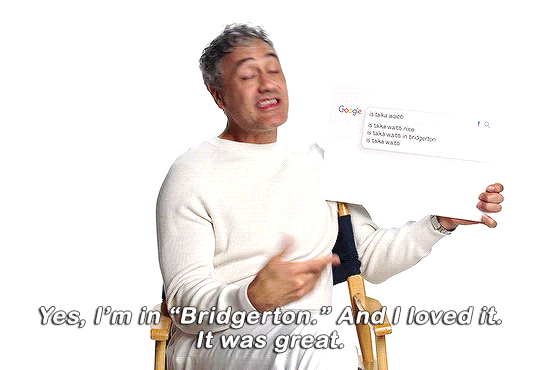
Is Taika Waititi in “Bridgerton?”
taika waititi | WIRED autocomplete interview
1K notes
·
View notes
Note
are pycnofibers and feathers the same structure just diverged early on?
Short answer: Maybe, but really the question is kinda unanswerable currently
Long answer: The answer to this are built on not just one maybe, but multiple layers of maybes. To start with, in case anyone's unfamiliar, let's talk about analogous and homologous structures. In evolutionary biology, a physical feature is homologous if it is shared between two species, and the common ancestor of those two species also had that feature. A common example is that the arm of a human and the wing of a bird are homologous, because we share the same pattern of bones and our distant common ancestor had those same bones!
On the other hand, a physical feature is analogous if it has a shared function, and it may or may not share an evolutionary origin! So for example, a bat's wing and a bird's wing are both analogous (same function, powered flight) and homologous (same bone pattern shared with common ancestor). A bird's wing and a dragonfly's wing, however, are analogous, but are not homologous (they do not share an evolutionary origin).
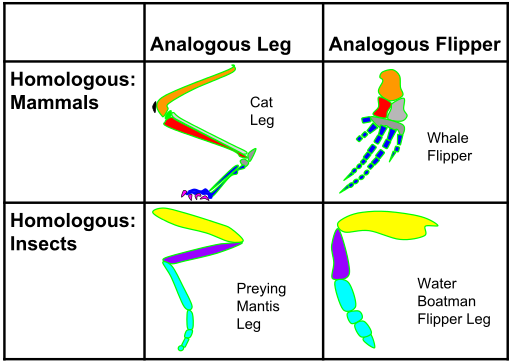
This table sums it up in a way that I find helpful, comparing analogous structures in insects and mammals. Via Wikimedia Commons.
So, the fuzz on dinosaurs and pterosaurs are pretty evidently analogous structures. They provide the same functions: temperature regulation, probably display, possibly smoothing the body's silhouette in flight? But the key question is, are they homologous? Did the common ancestor of pterosaurs and dinosaurs also have fuzzy structures?
Now, let's get to those multiple layers of maybes, starting with the issue of whether even dinosaurs had a fluffy common ancestor. We see evidence of filamentous structures in both theropods and ornithischians. These structures maybe come from the same evolutionary origin, and if they do, then the common ancestor of all dinosaurs right at the base of the tree also had filaments. As far as I'm aware, whether or not this is likely is a fairly subjective matter, but as you can probably tell from my palaeoart I lean towards the idea that dinosaurs were ancestrally fluffy.
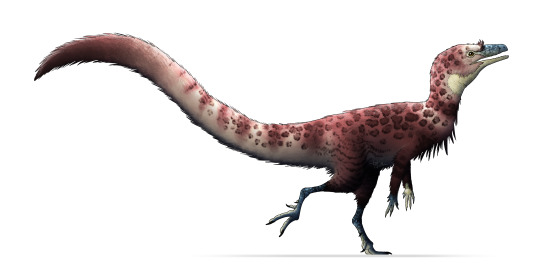
This little fellow, Lagerpeton, is one of the closest things to a dinosaur that isn't actually a dinosaur. If the ancestor of all dinosaurs was feathery, this guy probably was too!
If dinosaurs were ancestrally fluffy, then maybe the filaments of dinosaurs and pterosaurs come from the same evolutionary origin. If ancestral dinosaurs were fuzzy, that puts two very closely related lineages of fuzzy archosaurs very close together in time, some point in the Middle Triassic probably. If that's the case, then it makes sense that the common ancestor of these two groups was probably fuzzy.
However, you'll probably notice that this hypothetical scenario where ancestral fuzz is likely is constructed on top of the assumption that dinosaurs were ancestrally fuzzy, which is something that's still not fully proven. It's not even certain that all dinosaur fuzz is homologous, which makes pterosaurs tricky.
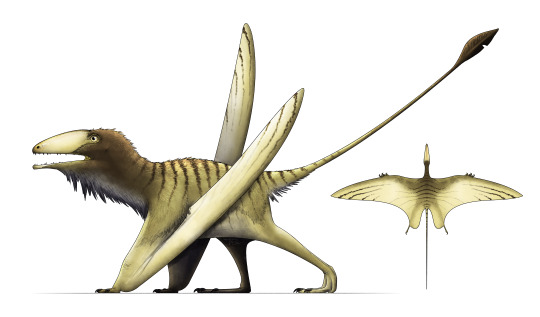
Even whether the earliest pterosaurs, like Peteinosaurus, had pycnofibres is currently only a matter of hypothesis!
The reality is the evidence which would most easily resolve the mystery currently does not exist. If, say, a Triassic dinosaur and Triassic pterosaur were discovered with fuzzy filaments then that would basically confirm that these two very close groups we both ancestrally fuzzy. Even better still would be some basal avemetatarsalian from the Middle Triassic with preserved fluff. That's basically like asking for the Holy Grail though, a genuine common ancestor of pterosaurs and dinosaurs.
Unfortunately, the oldest records we do have for feathered dinosaurs and pycnofibred pterosaurs stop at about the Middle Jurassic. Any older than that, and we lose the sites with immaculately fine silt grains that preserve soft tissue like feathers. That's not to say a future beautiful Middle Triassic silt bed couldn't show up, and oh boy I really hope one does eventually, but for now there's simply nothing out there to offer concrete proof.

Jeholopterus, an anurognathid pterosaur from the Middle to Late Jurassic of China, preserved with evidence of pycnofibres. Via Wikimedia Commons.
So in the absence of this proof, what do we do? I'd consider Occam's Razor a decent guiding principle here, although it's less reliable in some other areas of evolutionary biology. Occam's Razor basically states that the most reasonable explanation is one that doesn't unnecessarily multiply the entities of a problem.
To put it another way, it seems more reasonable, in an evolutionary sense, that three closely related groups (ornithischians, theropods, and pterosaurs) got their fuzziness from one fuzzy common ancestor. The alternate explanation is that two (or possibly three) very closely related groups all independently evolved remarkably similar feathery coats from being initially scaly.
Occam's Razor isn't foolproof, and there's a reason that we have the term convergent evolution, but in this case I think we should consider it a reasonable guess that the common ancestor of dinosaurs and pterosaurs had some sort of fluffy filaments, and that feathers and pycnofibres are indeed homologous.
But just to be clear, this is not the answer!! This is a best guess, a hypothesis based on available lines of evidence that disappear in the crucial stages of its evolutionary history, and the application of a logical rule of thumb to cap it off. Just because that's the side I lean towards, doesn't mean that the issue is settled or that I wouldn't change my perspective if new evidence came to light. That's the great thing about science after all!
So, I do hold to my original statement that right now, this question is not truly answerable (even though I've now spent almost 1000 words trying to answer it). We can guess and hypothesise, but for now the real answer remains out of reach.
1K notes
·
View notes







